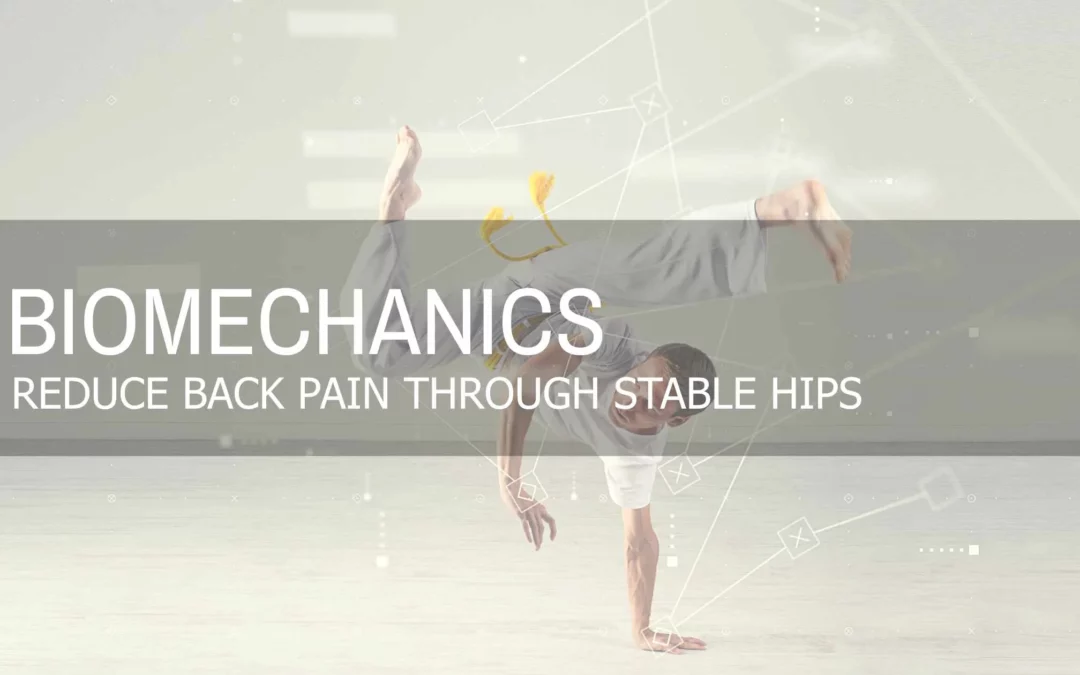Eliminating Back Pain Through Stable Hips
There is a saying which we at Fluid have grown to love over the years. It goes “it’s not the culprit which cries out but rather the victim”. This statement sums up perfectly what is often experienced in exercise populations dealing with pain and injury. We associate pain in one area of the body as unavoidable or that the issue is caused locally at the site of the pain. Remedies are employed which address the symptoms locally without considering how the issue started in the first place. So as with many other things in life – the solution isn’t necessarily that easy.
The body has multiple joints that are interconnected through connective segments made of muscle, tendons, ligaments and fascia tissue. Think of it like a Jenga puzzle. If one of the segments is off either above or below the piece in question this can lead to the whole structure tumbling down.
Learning which segments have relationships with each other in the body will help you to understand why that lingering ache in your back may have nothing to do with the back itself but rather the instability of your hips and pelvis.
Lower Cross Syndrome
One of the major muscle imbalances that affect a broad portion of the population is called Lower Cross Syndrome. This basically means that the front of your pelvis tilts lower than it should in relationship to the backside of your pelvis. This is due in part to a tightened psoas major muscle which creates a forward pull on the lumbar spine and takes the quadratus lumborum with it. This puts a tremendous amount of strain on your mid to lower back. Once your quadratus lumborum (spinal erector) and psoas (hip flexor) become reflexively tightened your transverse abdominis and internal obliques (abdominal muscles and spinal stabilizers) become functionally weakened.
How Does It Happen?
It can happen for several reasons –
- Repetitive movement or overuse – sitting for long periods of time or repetitive movements like running or bicycling which lift the hips into flexion can reinforce the use of your psoas and spinal erectors.
- Altered posture – Wearing heel lifts or high heels creates a downward slope which will naturally displace your body weight forward creating a slight forward lean.
How to Assess?
1) In front of a mirror and without your shoes on, stand with your feet shoulders-width apart and pointed straight ahead.
2) Raise your arms overhead with the elbows fully extended. The upper arm should be right in line with the ears.
3) Squat down to roughly the height of a chair without letting the arms fall; then go back to the beginning position.
4) Repeat several times.
- Did you lean forward excessively so that your upper torso drew forward over the knees?
- Was there an excessive arch in your lower back?
Overactive Muscles
Because we move in patterns our bodies favor the use of certain muscles groups over others. These muscles become tight, short and inflexible. These are the muscles that we’ll want to lengthen via self-myofascial release then follow it with static stretching. Below are the muscles we’ll want to focus on for runner’s knee.
- Rolling or self-applied pressure using self-myofascial release for 30-60 seconds each
- Stretch or lengthen each for 30-60 seconds each
- Erectors | Quadratus Lumborum
Underactive Muscles
As mentioned above pain in the body is commonly caused when how we move forces certain muscles to work overtime while other muscles become lazy and don’t want to function. We’ll need to wake up these lazy muscles through isolated strength movements.
- 2 sets on each muscle group
- 10-15 reps using a slow opening of the muscle, isolated hold at the bottom of the movement, followed by a controlled shortening of the muscle.
- Transverse Abdominus
- Gluteals
Now that you know which muscles are typically underactive and overactive here is an example of a quick corrective exercise video to help correct for lower cross. Before you get started make sure you have a foam roller handy.




